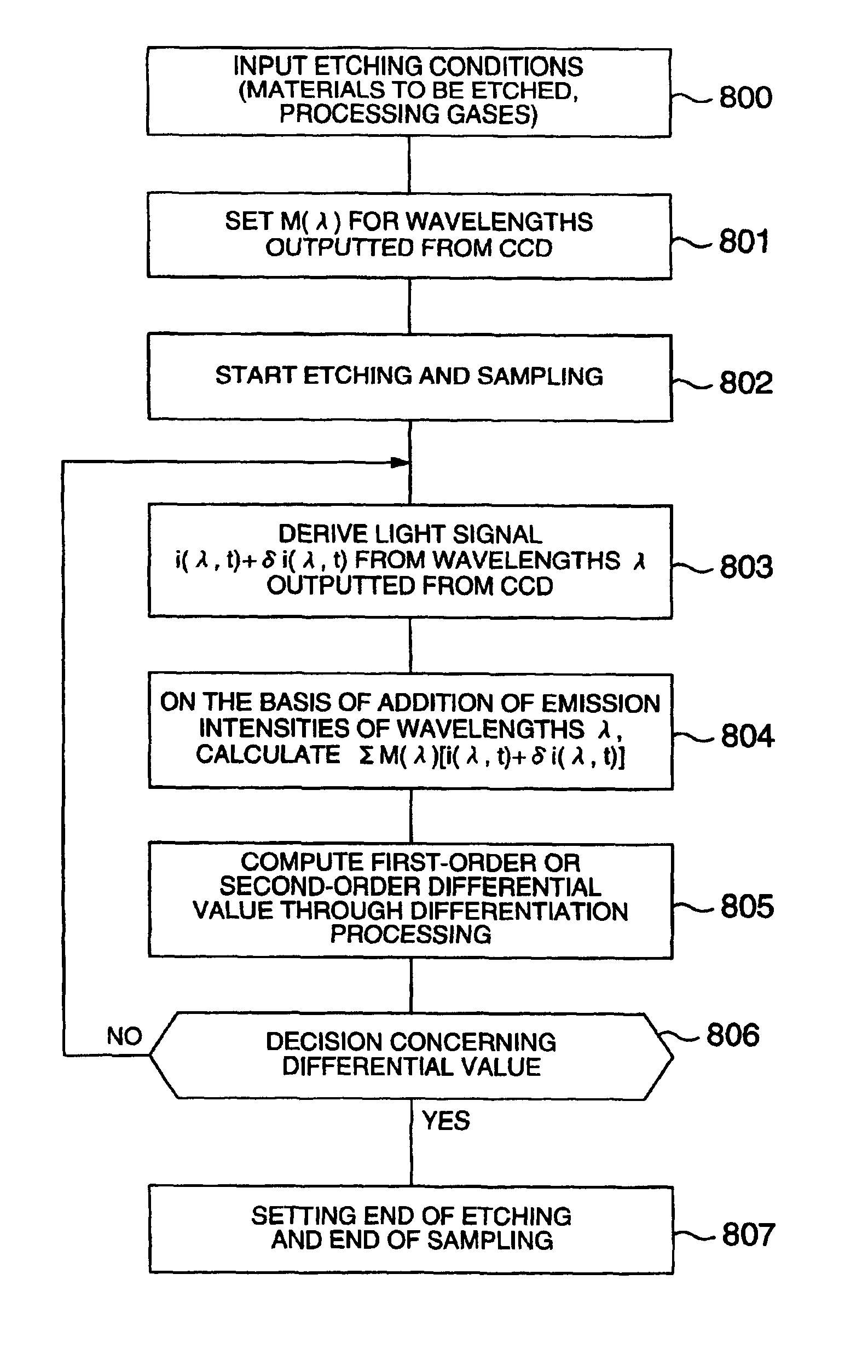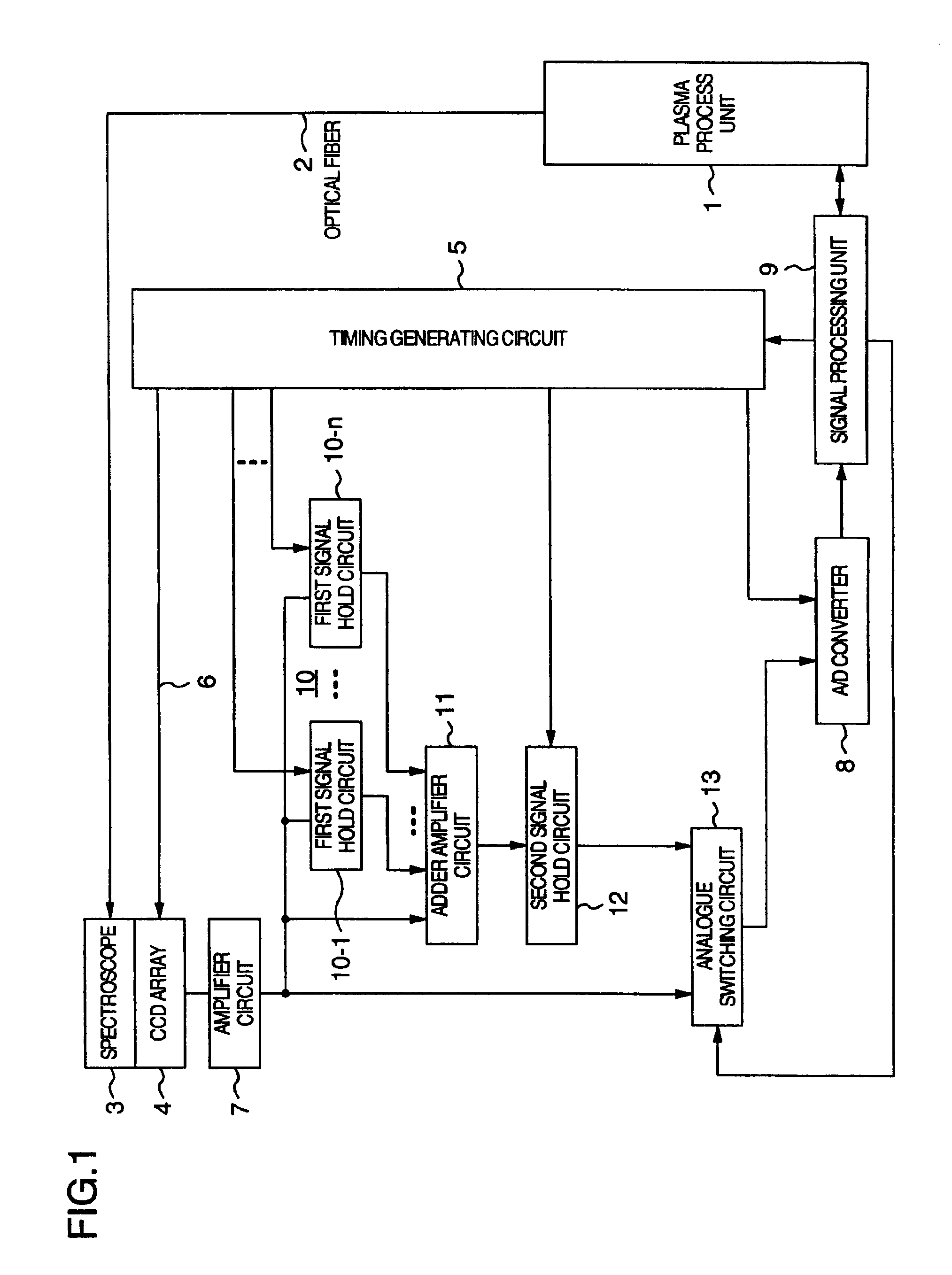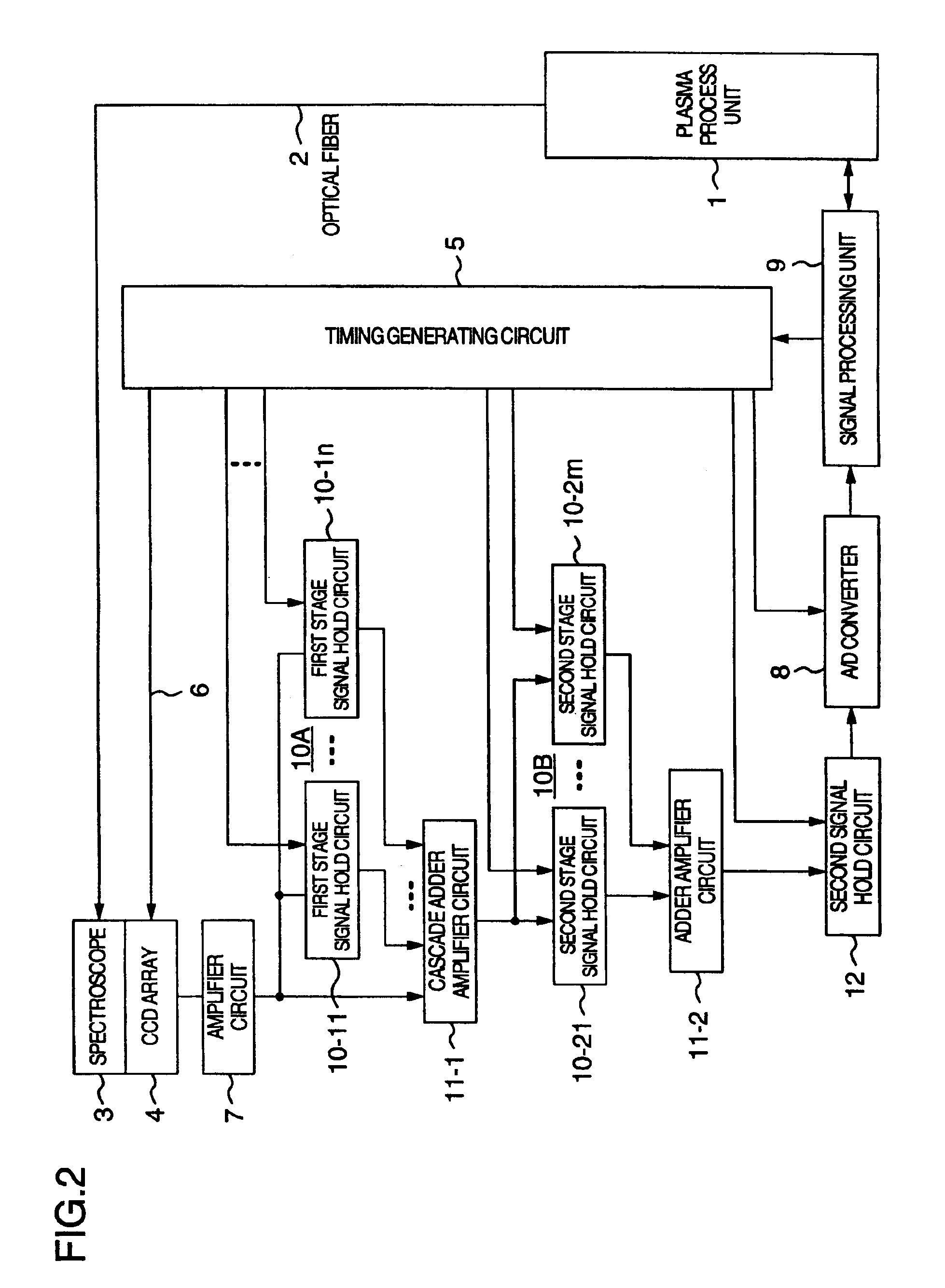Plasma processing method using spectroscopic processing unit
- Summary
- Abstract
- Description
- Claims
- Application Information
AI Technical Summary
Benefits of technology
Problems solved by technology
Method used
Image
Examples
Embodiment Construction
[0027]The present invention will be described in detail in conjunction with what is presently considered as preferred or typical embodiments thereof by reference to the drawings. In the following description, like reference characters designate like or corresponding parts throughout the several views.
[0028]FIG. 1 is a block diagram showing schematically and generally a structure of the emission spectroscopic processing apparatus according to an embodiment of the present invention. Referring to the figure, plasma emission produced within a treatment or process chamber of a plasma process unit 1 is introduced as input light into a spectroscope 3 through the medium of an optical fiber 2 via a slit. The spectroscope 3 serves for spectrally separating the input light passed through the slit into component spectra covering angles mutually differing on a wavelength-by-wavelength basis. The component spectra resulting from the spectral separation mentioned above then impinge onto a CCD (Cha...
PUM
| Property | Measurement | Unit |
|---|---|---|
| Wavelength | aaaaa | aaaaa |
Abstract
Description
Claims
Application Information
 Login to View More
Login to View More - R&D
- Intellectual Property
- Life Sciences
- Materials
- Tech Scout
- Unparalleled Data Quality
- Higher Quality Content
- 60% Fewer Hallucinations
Browse by: Latest US Patents, China's latest patents, Technical Efficacy Thesaurus, Application Domain, Technology Topic, Popular Technical Reports.
© 2025 PatSnap. All rights reserved.Legal|Privacy policy|Modern Slavery Act Transparency Statement|Sitemap|About US| Contact US: help@patsnap.com



